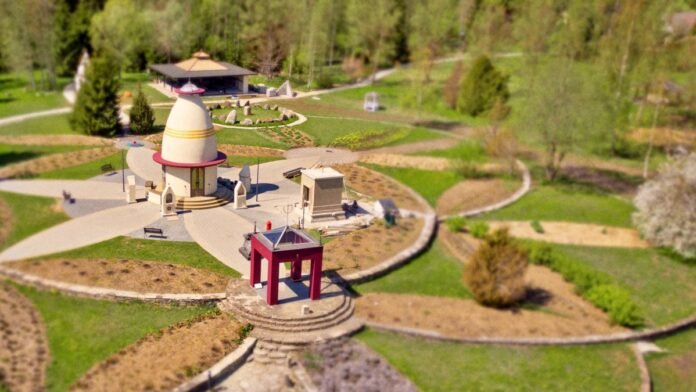
Estonia: In a landmark event for Hinduism in Europe, Estonia has become home to the continent’s largest Shiva Temple, a grand structure that not only stands as a testament to spiritual diversity but also marks a significant milestone in cultural integration within the region. The temple’s inauguration is set to be a week-long affair, commencing on June 4 and culminating on June 13, with the pinnacle of the celebrations scheduled for June 10.
The temple’s consecration, known as the Maha Kumbhabhishekam, is a series of elaborate traditional rituals, prayers, and cultural festivities that are anticipated to attract a multitude of guests from both India and Europe. The sacred ceremonies are led by esteemed priests from Tamil Nadu, S Boopathi Shivacharya Swamigal, and Venkatesh Jayaram, who bring with them the authentic essence of the rituals.
Founder of the Shiva Temple and Kriya Yoga instructor, Ingvar Villido Acharya Ishwarananda, expressed that the temple embodies the commitment to the age-old teachings of Sanatana Dharma and is a step towards emulating the path laid down by the revered rishis and Siddhas.
Shiva, a central figure in Hinduism revered as the destroyer and transformer, is part of the Trimurti, which includes Brahma the creator, and Vishnu the preserver. Shiva’s significance extends beyond his mythological roles, as he is also venerated as the patron deity of Yoga, meditation, and the arts.
The temple complex, sprawling over 5500 square meters, is nestled in the scenic locale of Lilleoru, close to Estonia’s capital, Tallinn. The architectural marvel has been constructed following the ancient Indian Aagama Silpa Saasthra principles and was designed by the talented duo, Dhanabal Mayilvel, and Manivel Mayilvel, from the Shri Thenkani Traditional Architecture Hindu Temple Construction & Sculpture Group based in Tamil Nadu.

Within its hallowed walls, the temple enshrines a plethora of sacred statues, each representing revered deities such as Lord Shri Karpaga Nadhar, Mother Brahand Nayagi, Shri Ganapathy, Shri Bala Murugar, the Saptha Rishis, Navanaths, 18 Siddhas, and the Navagrahas, among others.
Despite the Hindu community in Estonia being relatively small, with a few hundred members, it is a vibrant and diverse group consisting of Estonian converts, Indian expatriates, and students. The influence of Hinduism in Estonian society is palpable, especially through the widespread practice of Yoga and meditation, as many Estonians find solace and spiritual enrichment in these ancient traditions.




















































